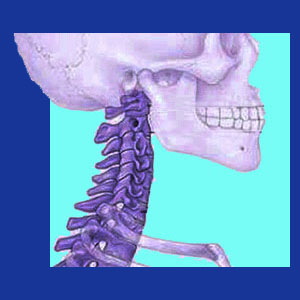
Osteoporosis neck pain is a misleading topic of conversation, since it implies that this common bone density concern is inherently painful; which it is not. Osteoporosis is a silent and asymptomatic process which slowly deteriorates the skeleton, leading to potentially catastrophic effects late in life. While low bone density and/or porous bones are not painful unto themselves, they can become real problems due to several possible reasons.
The scope of this article will detail the consequences of osteoporosis on the cervical spine and how it may actually be responsible for pain in some patients.
Osteoporosis Neck Pain Mechanisms
Osteoporosis is a mostly preventable health crisis. There are genetic markers which may make some people more or less susceptible to skeletal changes, but the condition can be prevented in almost all through proper precautions earlier in life.
Osteoporosis is primarily a disease of the elderly, but can strike at almost any point past middle age. The older a person gets, the harder it is for their body to replace bone cells and maintain a strong and solid skeletal structure.
Osteoporosis causes no pain directly. However, low bone density facilitates extreme osteoarthritic change, encourages the development of adult scoliosis, contributes to the incidence of spondylolisthesis and certainly is a major factor in the occurrence of vertebral fractures. Bone density concerns are considered terrible health risks, despite their pain-free nature. In essence, although osteoporosis does not cause pain itself, it does cause or contribute to other painful conditions.
Osteoporosis Expressions
Certainly the most common reason for neck pain to occur in relation to low bone density and high bone porosity is the incidence of fracture in elderly patients. A fractured cervical vertebra can occur due to virtually any trauma and might even come about due to the weight of the body alone. While these compression type fractures are far more common in the mid and low back, they can occur anywhere, including in the neck.
Older patients with low bone density might also suffer exaggerated and accelerated arthritic neck pain, which may become very severe in some instances. These osteoarthritic processes can attack the facet joints, the vertebral bodies or the spinal canal itself, possibly causing pinched nerve neck pain, cervical spinal stenosis or cervical facet syndrome.
Preventing and Treating Osteoporosis Neck Pain
Once you have osteoporosis, it is usually too late to do much about it. Sure, there are pharmaceutical therapies which can help prevent further deterioration of the bones, but the damage has already been done through years of abuse or neglect.
It is vital to understand that osteoporosis is easily prevented using a combination of proper diet and skeletal loading exercise. Eating right and including lots of calcium, magnesium and vitamin D are all important parts of an osteoporosis diet. However, this must be maintained from an early age, and truthfully, most younger people are unfortunately too far removed from the problem to even worry about bone density. To learn more about neck pain caused by osteoporosis, speak to your doctor.
Neck Pain > Neck Pain Causes > Osteoporosis Neck Pain





